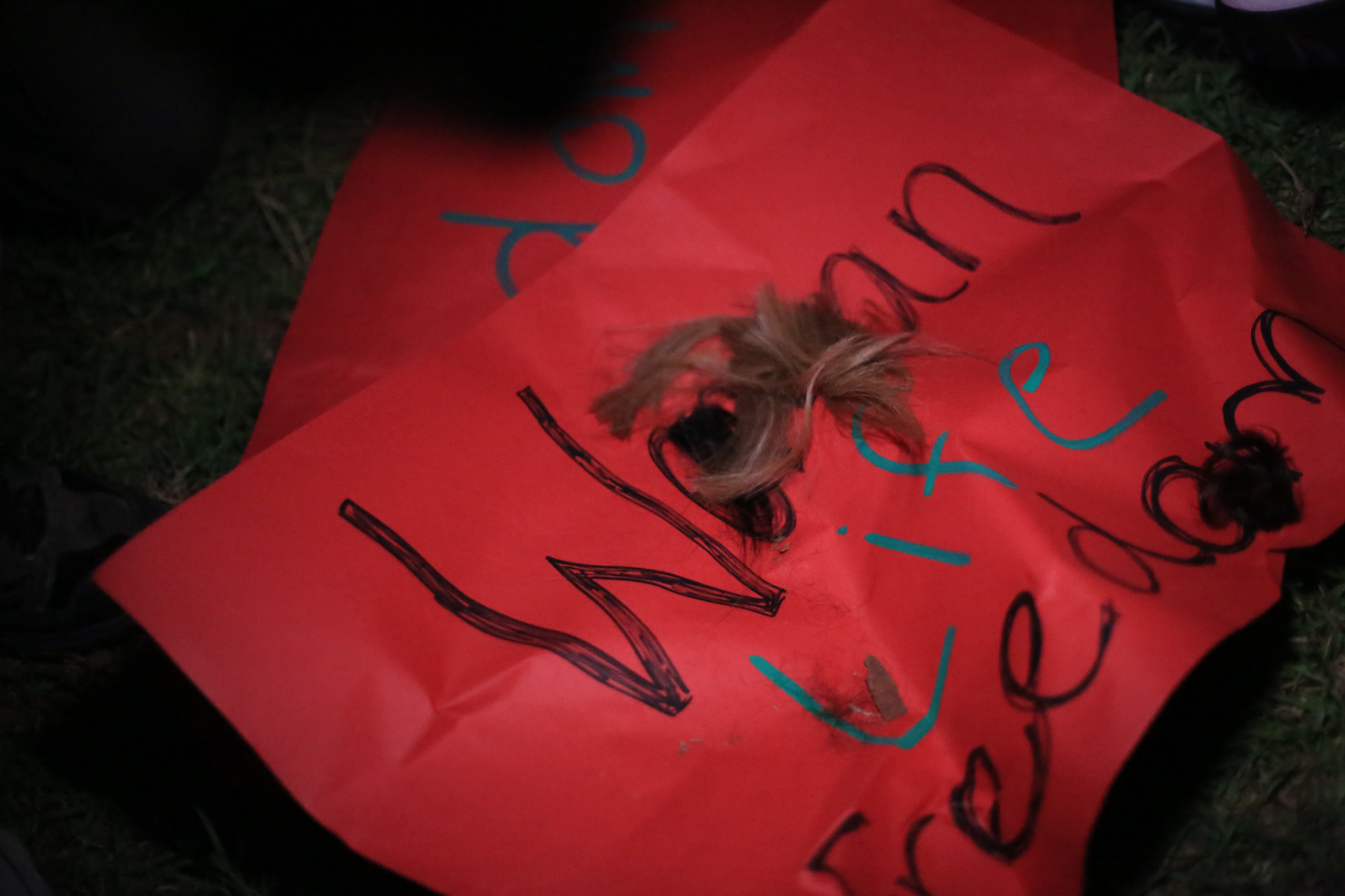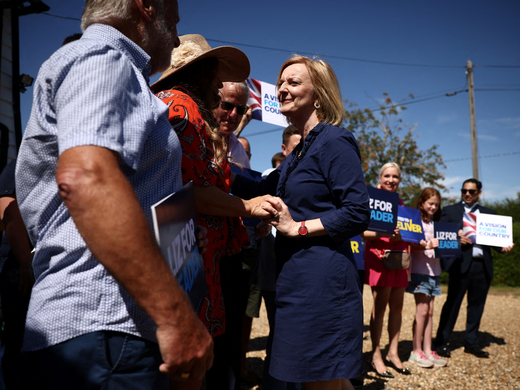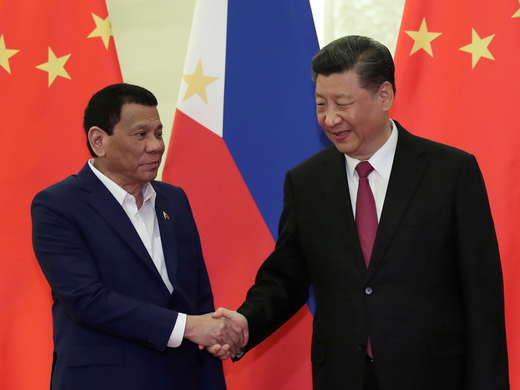“This confrontation between the women of the country and the regime is the oldest, most enduring standoff in Iran. And I think the women are winning,” said Iranian-American poet and author Roya Hakakian about the continuing protests in Iran in a recent interview for The Atlantic. There is both a sense of déjà vu and novelty to the nationwide demonstrations sparked by the death of 22-year-old Mahsa Amini September 16, while she was in the custody of the so-called morality police. Iran has experienced waves of protests since the 1979 revolution, including over contested elections in 2009 and fuel prices in 2019, but this time the extent and persistent nature of the demonstrations feel different — as if Iranians on the street feel they have nothing to lose. There is a sense of a real revolution.
While the protests were sparked by Mahsa Amini’s death, there is also a convergence of factors fuelling them: economic hardship resulting from international sanctions and corruption; economic inequalities; the return of hard-line politicians after a period of limited progress; the continued existence of a conservative clerical elite; and a generation of Iranians who have grown up with the internet. There is also a sense that Mahsa Amini could have been any Iranian young woman. She was not politically engaged but the violent morality police arbitrarily determined that she was not wearing her headscarf according to Iran’s hijab laws. They sought to make an example of her.
This time the demonstrations are not simply to protest the regime’s decision to abruptly raise fuel prices, as it did in 2019, or the victory of Mahmoud Ahmadinejad in the 2009 contested presidential elections. Now we are seeing videos on social media showing protesters chanting “death to the dictator,” defacing images of Supreme Leader Ali Khamenei and attacking state symbols. The protesters want the regime to go.
There are two notable factors that also make this current wave of unrest different: women’s participation, and the internet, social media in particular. These elements are not new to Iranian history and protests, but they have reached an apex.
Women at the Forefront
Women have long been at the forefront of protests in Iran. As author Roya Hakakian stated in The Atlantic interview: “This revolution in Iran is 43 years old. On March 8, 1979, which was barely even a month after the Iranian Revolution had succeeded, women took to the streets to protest the hijab and the ayatollah’s reinstatement of a mandatory dress code.” Similarly, the founding director of the Middle East Program at the Woodrow Wilson International Center for Scholars, Haleh Esfandiari, wrote in 2019 for the Atlantic Council: “For forty years, women have resisted the Islamic Republic’s attempt to deny them rights previously won.” Indeed, among the first acts of the new regime in 1979 were the suspension of the Family Protection Law and then the imposition of the veil, which has now become a reminder of the Islamic regime’s power and its most visible form of policing. Since then, each wave of protests has brought a new generation of boundary-pushing women and men.
In a recent article for Foreign Affairs, Iranian scholar and reformist politician Fatemeh Haghighatjoo and Harvard Kennedy School experts Zoe Marks and Erica Chenoweth write that “the remarkable size and resilience of these protests are directly tied to the central participation of women. When women are on the frontlines, mass movements have a higher chance of succeeding and are likelier to lead to more egalitarian democracy.” Women are viewed as a threat by the regime, which therefore sees itself as having “a strategic reason to be sexist.”
Since the return of hard-line politicians in 2020, government control over Iranian women’s lives has become more rigid and invasive. In July 2022, President Ebrahim Raisi ordered tougher enforcement of the country’s hijab and chastity law, which states that “‘violators will be fined, while female government employees will be fired if their social media profile pictures do not conform to Islamic laws.” Iran’s strict hijab law (a dress code that requires all females from the age of puberty to cover their hair and dress "modestly"), the segregation of boys and girls in schools, a new population law that puts women’s health at risk, and unjust inheritance laws treat and make women feel like second-class citizens.
Women make up 60 percent of Iran's university graduates but just 15.2 percent of the labour market. The regime is even considering using facial recognition technology to enforce the hijab law. The morality police have also become more repressive. To cite just one example, in July, a young writer and artist named Sepideh Rashno was arrested, beaten and forced to “confess” on TV following an altercation with a female enforcer of the hijab law.
This renewed crackdown on women’s freedoms means that women’s rights are front and centre in the ongoing protest. The protest slogan is emblematic of this: “Women, life, liberty,” a popular Kurdish battle cry used by all-female units in Kurdistan, has become the rallying chant for protesters and combines all their demands for an ordinary life of freedom. It “conjures a vision of a society that is more equal not just along gender lines, but ethnic ones, as well,” according to Narges Bajoghli, an Iranian anthropologist and professor of Middle East Studies at Johns Hopkins University. Similarly, a New York Times analysis of videos of the protests “reveals new ways in which common protest language has become centered on women.”
During the 2009 Green Movement, a video of Neda Agha-Saltan, a 26-year-old protester, bleeding to death after she was shot by security forces, was put online and viewed hundreds of thousands of times.
The Internet: Iran’s Public Sphere
The internet is playing a key role in Iran, according to Bajoghli, by giving young people a public platform on which to be heard and connect with others' ideas. In a recent interview on the Politics Theory Other podcast, Bajoghli explained that, in the early 2000s, Iranians turned to blogging and social media to such an extent that Persian was the third-most-used language on the internet - which is extraordinary, given that Persian is far from the most spoken language in the world. The 2009 Green Movement was also a determining moment in the powerful coming together of the internet and social movements. Word of demonstrations spread in part via text messages and social media platforms. In videos and photos, demonstrators could be seen wearing green clothes or armbands and chanting “Where is my vote?” in support of Mir Hossein Mousavi, the reformist candidate who had supposedly lost in the election. The hashtag #iranelection “became the first long-trending international hashtag,” thereby changing the way people use the internet globally, including during protest movements.
Social media has also become the site of evidence of the regime’s violence. During the 2009 Green Movement, a video of Neda Agha-Saltan, a 26-year-old protester, bleeding to death after she was shot by security forces, was put online and viewed hundreds of thousands of times. It served as a rallying point for more anti-government protests. When the then US president Barack Obama was asked about the video, he responded: “It’s heartbreaking. I think that anybody who sees it knows there’s something fundamentally unjust about that. …I think it’s important for us to make sure the Iranian people know we are watching.”
Despite significant censorship and surveillance, Iranian women have made ample use of social media, using symbolic acts of defiance to state their discontent and demand fundamental rights. In 2014, Iranian-American journalist and activist Masih Alinejad took a selfie without her veil on and posted the photo on Facebook. In protest against Iran’s mandatory dress code, other Iranian women soon posted photos of themselves without their headscarves. Alinejad’s My Stealthy Freedom became an online movement that by 2017 had received more than 3,000 photos and videos of women without their heads covered.
The cybersphere has become a platform for these political acts, unlike any available to previous generations. In 2017, Alinejad launched the White Wednesday campaign, encouraging women to post photos and videos of themselves wearing a white veil or other item and to remove the veil in public. Using the hashtag #whitewednesdays, this movement brought online acts of defiance to the streets of Iran. One video has become emblematic: on December 27, 2017, Vida Mohaved stood on a utility box on Revolution Street in Tehran, removed her white headscarf, and waved it on a stick in an act of civil disobedience.
Iranian women have also taken part in global movements for women’s rights. In August 2020, they used Twitter to share their experience of sexual violence and harassment, using the hashtag #MeToo and even the hashtag #rape (tajavoz in Persian) on the Iranian Twittersphere. They were met with a barrage of threats from bots and trolls.
Today, Iran has become younger and more urban, and internet penetration is at 84.1 percent. In an essay for Foreign Policy, Iranian-American analyst Holly Dagres explains the importance of Gen Z, the generation born between 1997 and 2012, in the strength of the current protest. Iran’s youth, who make up 60 percent of the population, have grown up with the internet and therefore have been exposed to global ideas and culture. They also witnessed the repression of the 2009 Green Movement and 2019 protests, while living in international isolation and economic hardship, Dagres argues. She writes that the Gen Zers have created memes to mock the establishment and used the Clubhouse app to hold debates about the regime.
It is therefore no surprise that social media are playing a central role in the ongoing protest. Photos and videos abound of women removing their headscarves in public and sometimes even burning them, high-school girls staging protests in schools and chanting “Seyed Ali (Khamenei) will be overthrown this year!” while confronting their teachers, and female students chanting “Get lost!” to President Ebrahim Raisi. Women have been seen cutting off their hair on Instagram and in public, a highly symbolic act since the Iranian regime has decreed that women’s hair must be hidden. In Persian culture, the cutting of hair is a sign of mourning, a practice mentioned in a 1,000-year-old Persian epic poem. On September 21, the writer Shara Atashi tweeted: “Women cutting their hair is an ancient Persian tradition also found in the Shahnameh, when the fury is stronger than the power of the oppressor. The moment we have been waiting for has come. Politics fueled by poetry.” This gesture has also been replicated by international actresses such as Juliette Binoche and Isabelle Huppert.
The movement has also received support from Iranian actors, artists, influencers and sports stars, including soccer player Ali Daei. The singer Shervin Hajipour released a song on Instagram titled “Baraye,” which translates to “because of …” in Persian; the song has become an anthem for the protests, and ends with the lyrics “for women, life, freedom.” Public support for the movement comes with a heavy price: the rapper Toomaj Salehi, who released several songs in support of the protests, was detained by the police, and recent footage of the singer released by state-affiliated media has sparked fears that he has been tortured.
The role of social media in informing the world about what is happening in Iran cannot be overstated. Yet, in a live event hosted by the Council on Foreign Relations, Sanam Vakil emphasized that it is also important to talk about what is not seen in these videos, including the arrests and intimidations at night, which the regime has long been using to silence Iranians. People are sometimes picked up in the middle of night; no one knows where they are taken. There are also rumours of rape and sexual harassment, and torture in Iranian prisons. These are the things we don’t see on social media but that must be talked about.
Internet Crackdown
Iranian authorities are well aware of the power of internet-savvy young people and have been closing off avenues for online expression of dissent and protests since the 2009 Green Movement. To the regime, the internet has become a national security threat.
According to Freedom House’s Freedom on the Net 2021 report, websites and social media are heavily filtered in Iran. Thirty-five percent of the world’s most-visited websites are blocked, as are most social media platforms, such as Facebook and Twitter. This means a large majority of Iranians use censored social media. A government motion introduced in March 2021 aims to criminalize content produced and published on so-called “unauthorized platforms” such as YouTube and Twitter.
Iranian authorities have developed a National Information Network, a centralized internet infrastructure that allows authorities to restrict connectivity and monitor content, and are determined to create a national internet similar to China’s Great Firewall. Internet disruptions and shutdowns are frequent in Iran, especially during periods of turmoil. During the 2019 wave of protests over fuel prices, for example, the Iranian National Security Council imposed a seven-day internet shutdown that disrupted connections across the country and gave Iranian security forces time to hide the unlawful killing during the protests of 323 men, women and children.
Government authorities regularly arrest journalists and activists due to their participation in online mobilization movements or simply because they make statements regarded as threatening to the regime, according to the Freedom House report. This type of surveillance and harassment can be transnational. For example, the BBC revealed in May that two Persian-language moderators at Instagram claimed that they'd been offered bribes by Iranian intelligence services to delete the accounts of journalists and activists, among them Masih Alinejad.
Despite significant surveillance and censorship, many Iranians have been able to circumvent restrictions by using virtual private networks. But access to these networks may end. Under President Ebrahim Raisi, the Parliament is quietly implementing a new law entitled the User Protection Bill that criminalizes the use and distribution of private networks, and gives greater powers to authorities to restrict the online sphere.
Since the beginning of these protests, authorities have increasingly blocked access to platforms, including Instagram and WhatsApp, which have now been removed from local app stores. Western companies have struggled to keep Iranians connected, despite the Biden administration’s easing of sanctions for tech companies. Indeed, the regime is using a near-total internet blackout to prevent communication among protesters and with the outside world. As tech entrepreneur Mehdi Yahyanejad said: “Internet shutdowns are psychological tools designed to terrify populations, to convince them that they are voiceless.” According to the organization ARTICLE 19, the regime has persecuted, harassed and arrested Iranian technologists and digital rights defenders who have criticized internet restrictions, including the User Protection Bill. While hacktivists are trying their best to support anti-government protests, the regime has technological tools to hit back.
Revolutions take time. Successful movements require more than tweets, Instagram videos and technology. But Iran's internet blackouts and the banning of social media platforms show that information flows matter. As the regime attempts to build a cyber wall around the country, people on the outside must keep watching.
We must also look to women, even as this patriarchal regime seeks to silence them. As Zoe Marks, Fatemeh Haghighatjoo and Erica Chenoweth write in Foreign Affairs, “The videos and photographs that have made it through Iran’s media blackout demonstrate how women can act as powerful agents of change even — perhaps, particularly — under patriarchal authoritarian politics.”



